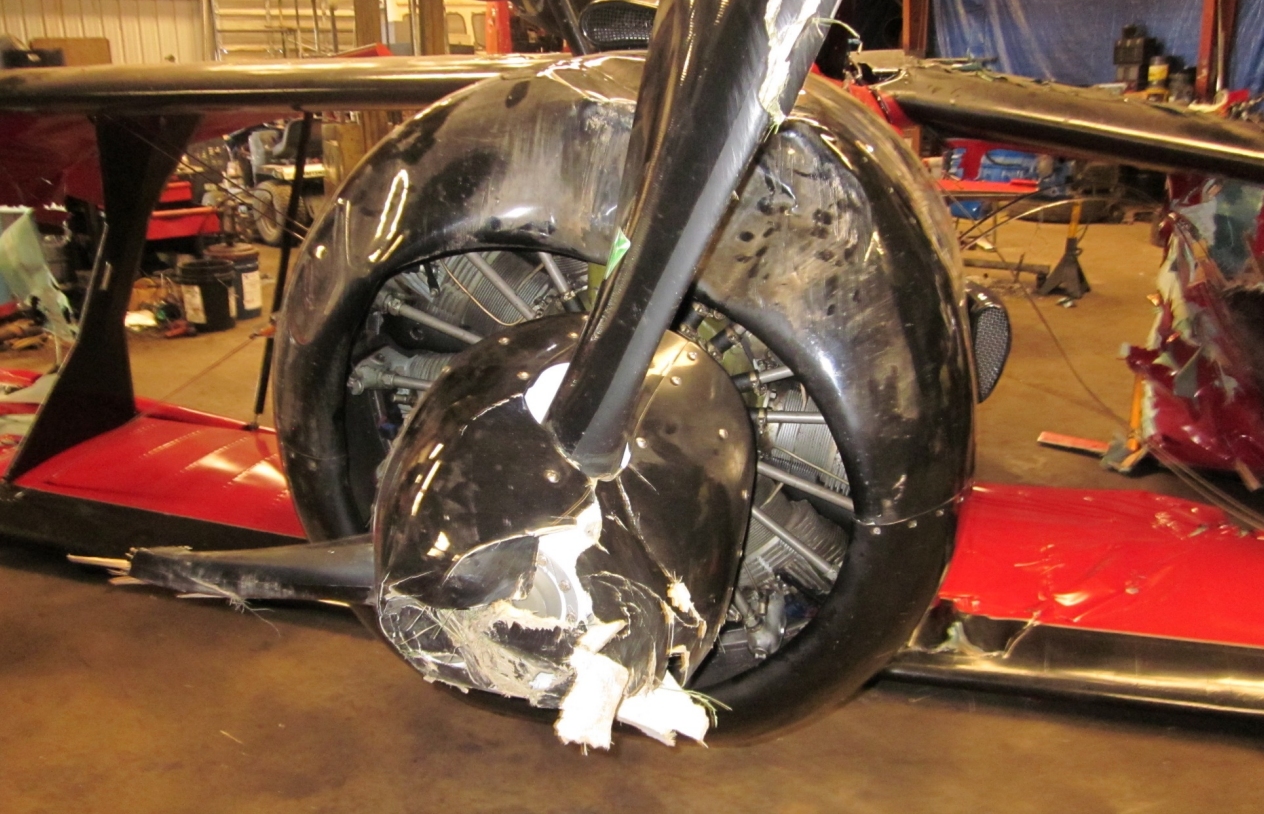
ASN Wikibase Occurrence # 211771
This information is added by users of ASN. Neither ASN nor the Flight Safety Foundation are responsible for the completeness or correctness of this information.
If you feel this information is incomplete or incorrect, you can submit corrected information.
| Date: | Thursday 31 May 2018 |
| Time: | 17:45 |
| Type: | Sorensen BF9-2 |
| Owner/operator: | Private |
| Registration: | N81973 |
| MSN: | 24601-001 |
| Year of manufacture: | 2008 |
| Total airframe hrs: | 309 hours |
| Engine model: | Vendenyev M-14P |
| Fatalities: | Fatalities: 0 / Occupants: 1 |
| Aircraft damage: | Substantial |
| Category: | Accident |
| Location: | Uinta County east of Evanston, WY -
 United States of America United States of America
|
| Phase: | Landing |
| Nature: | Private |
| Departure airport: | Longmont, CO (LMO) |
| Evanston, WY (EVW) | |
| Investigating agency: | NTSB |
| Confidence Rating: |
The pilot of the biplane reported that he believed he had departed with 38 gallons of fuel in the main fuel tank and 17 gallons in the auxiliary fuel tank. En route, the auxiliary fuel tank ran dry, so he switched to the main fuel tank, which he believed had 35 gallons of fuel remaining.
The pilot reported that, while descending to the destination airport, the engine experienced a loss of power. He added that he believed the throttle linkage had broken and that the carburetor was at idle. During the forced landing, he aligned the airplane with a highway and observed four semi-tractor trailers but thought they were ahead of his flightpath. The biplane struck one of the semi-tractor trailers, violently turned right, and then came to rest inverted on the right side of the highway.
The biplane sustained substantial damage to the left wings.
Postaccident examination revealed that the main fuel tank was empty, and the throttle linkage was intact. The pilot reported that his typical fueling process is to fuel the main fuel tank before fueling the auxiliary fuel tank. He added that he reviewed fuel receipts and found that, before the accident flight, he fueled the auxiliary fuel tank first and, while following his routine, believed that the main fuel tank had already been fueled. This resulted in a departure with 10 gallons of fuel less than planned.
The pilot reported that there were no preaccident mechanical failures or malfunctions with the biplane that would have precluded normal operation.
Probable Cause: The pilot’s failure to fuel the biplane’s main fuel tank before the flight and his inadequate preflight inspection, during which he did not verify the fuel quantity, which resulted in fuel exhaustion.
Accident investigation:
 |
|
Sources:
NTSB
FAA register: http://registry.faa.gov/aircraftinquiry/NNum_Results.aspx?NNumbertxt=81973
Location
Images:

Photo: FAA
Media:
Sorensen BF9-2 bi-plane crashes near Evanston, WY, USA. https://t.co/j1KL0s89sB pic.twitter.com/4BZQ9pbhVO
— Planes Of Legend (@PlanesOfLegend) 1 juin 2018
Revision history:
| Date/time | Contributor | Updates |
|---|---|---|
| 01-Jun-2018 14:28 | Geno | Added |
| 01-Jun-2018 14:45 | Iceman 29 | Updated [Time, Source, Embed code] |
| 11-Nov-2018 08:32 | ASN Update Bot | Updated [Time, Departure airport, Destination airport, Source, Embed code, Narrative, Accident report, ] |
| 11-Nov-2018 09:11 | harro | Updated [Source, Embed code, Narrative, Photo] |
Corrections or additions? ... Edit this accident description
The Aviation Safety Network is an exclusive service provided by:


 ©2024 Flight Safety Foundation
©2024 Flight Safety Foundation